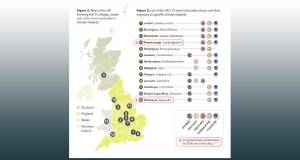- General
- Posted
Thermal bypass paper published
The paper reviews the literature on thermal bypass, contains over 150 references, and identifies practical actions that can be taken to prevent thermal bypass having a significant impact upon performance. The paper has received peer review by informed practitioners and academics, and was authored by seasoned passive house architect and building physics expert Mark Siddall of LEAP.
Siddall said that understanding and preventing thermal bypass was an important aspect of addressing the performance gap between theoretical and real-world energy performance. “Thermal bypass is largely unregulated and can increase heat loss ten-fold,” he said.
Relevant to new build and retrofit projects, the guide draws upon a sound evidence base which reveals simple practical steps policymakers, developers, certifiers, designers, and constructors can take to create successful high-quality, high-performance, and robust buildings at speed and scale to meet climate targets. The Passivhaus Trust said people who read the paper will gain new insights, build confidence and discover how to make informed, intelligent decisions that will improve the health, well-being and energy security of building occupants and owners, reduce carbon emissions and fuel poverty, close performance gaps, avoid costly mistakes, and protect the building fabric from moisture damage.
In the paper Siddall identifies different types of thermal bypass including closed loop, open loop wind washing, and open loop air leakage (including infiltration or exfiltration).
The Passivhaus Trust state that by contextualising an understanding of thermal bypass, this paper provides a comprehensive and technical demonstration of how passive house reliably closes the performance gap. “If thermal performance gaps are to remain within an acceptable tolerance, then continuous insulation should be encapsulated on all sides by uninterrupted, unbroken air and wind barriers,” the trust said.
The paper makes the case for the application of the passive house standard at scale to provide a robust solution that delivers high performance construction, energy savings, carbon emissions, comfort, and health and well-being that owners, investors, and occupants can rely on both now and in the future.
To read more visit www.passivhaustrust.org.uk/guidance.php to download the paper.
Related items
-
 September’s AECB environmental construction conference seeks to spark debate among industry experts
September’s AECB environmental construction conference seeks to spark debate among industry experts -
 Climate report warns overheating crisis threatens UK
Climate report warns overheating crisis threatens UK -
 Sustainable building leaders crowned at Exemplar Awards
Sustainable building leaders crowned at Exemplar Awards -
 Barratt launches record passive house scheme
Barratt launches record passive house scheme -
 Green homes and finance join forces for growth
Green homes and finance join forces for growth -
 Irish and British associations unite for conference as passive house explodes
Irish and British associations unite for conference as passive house explodes

